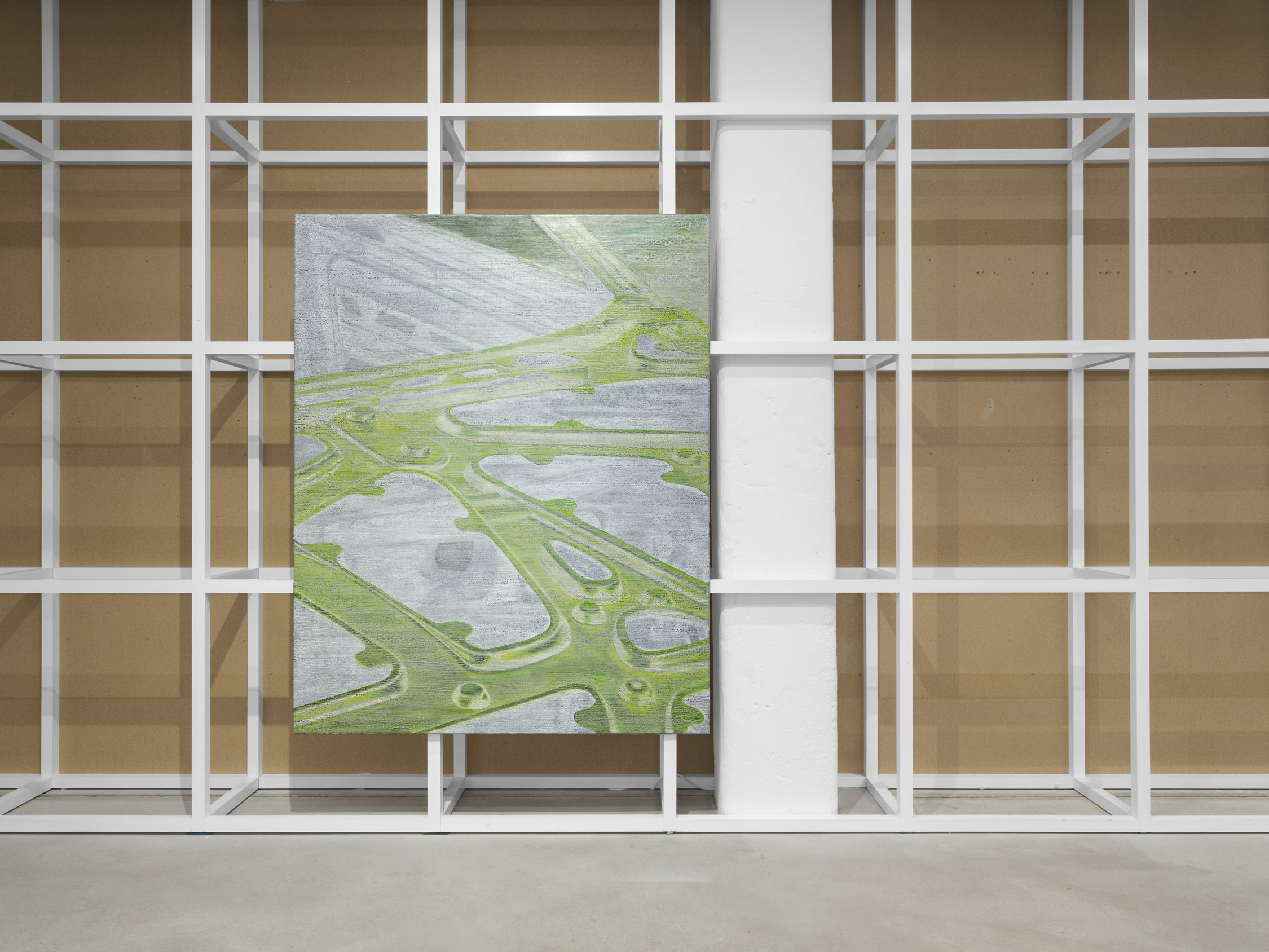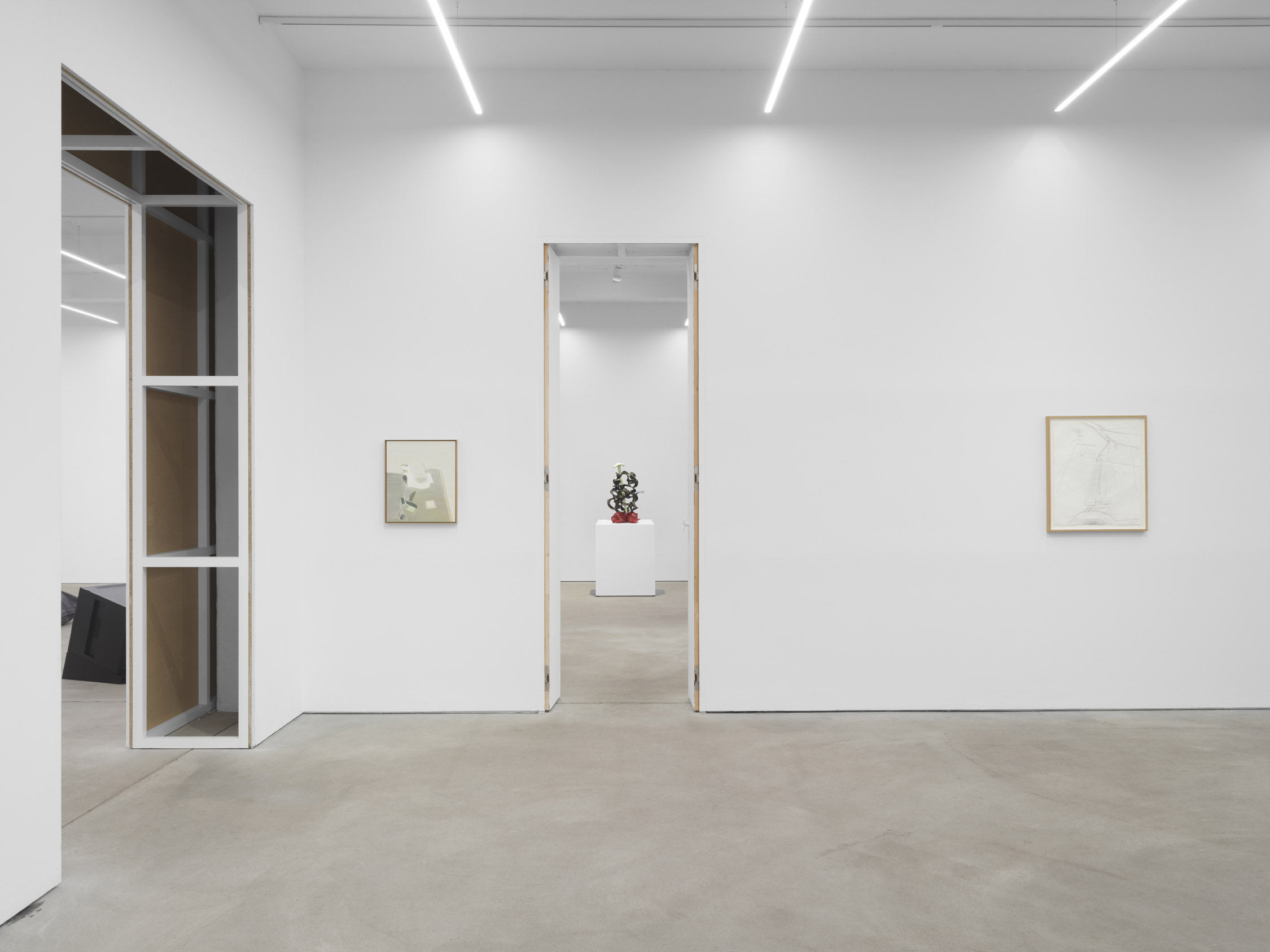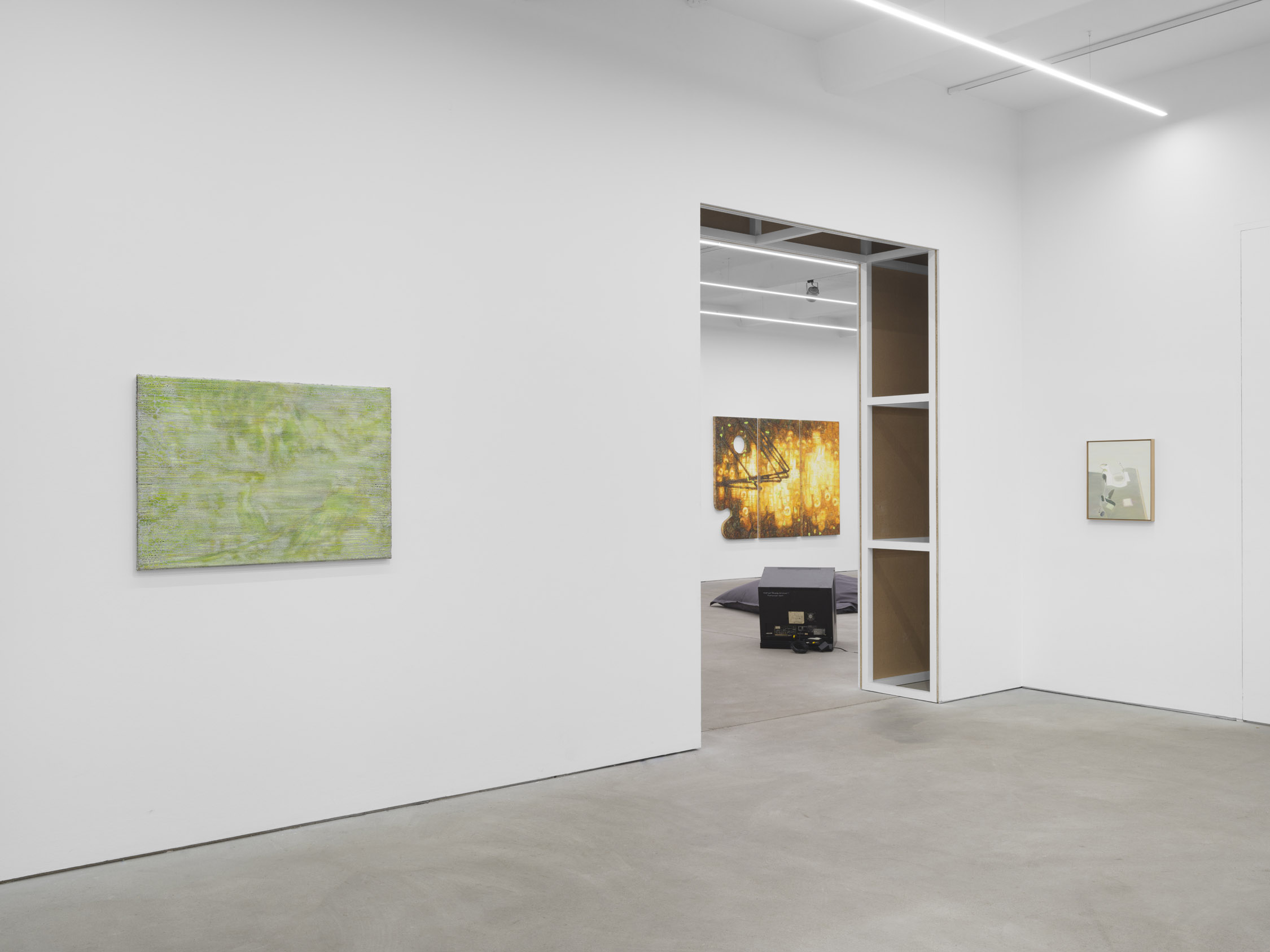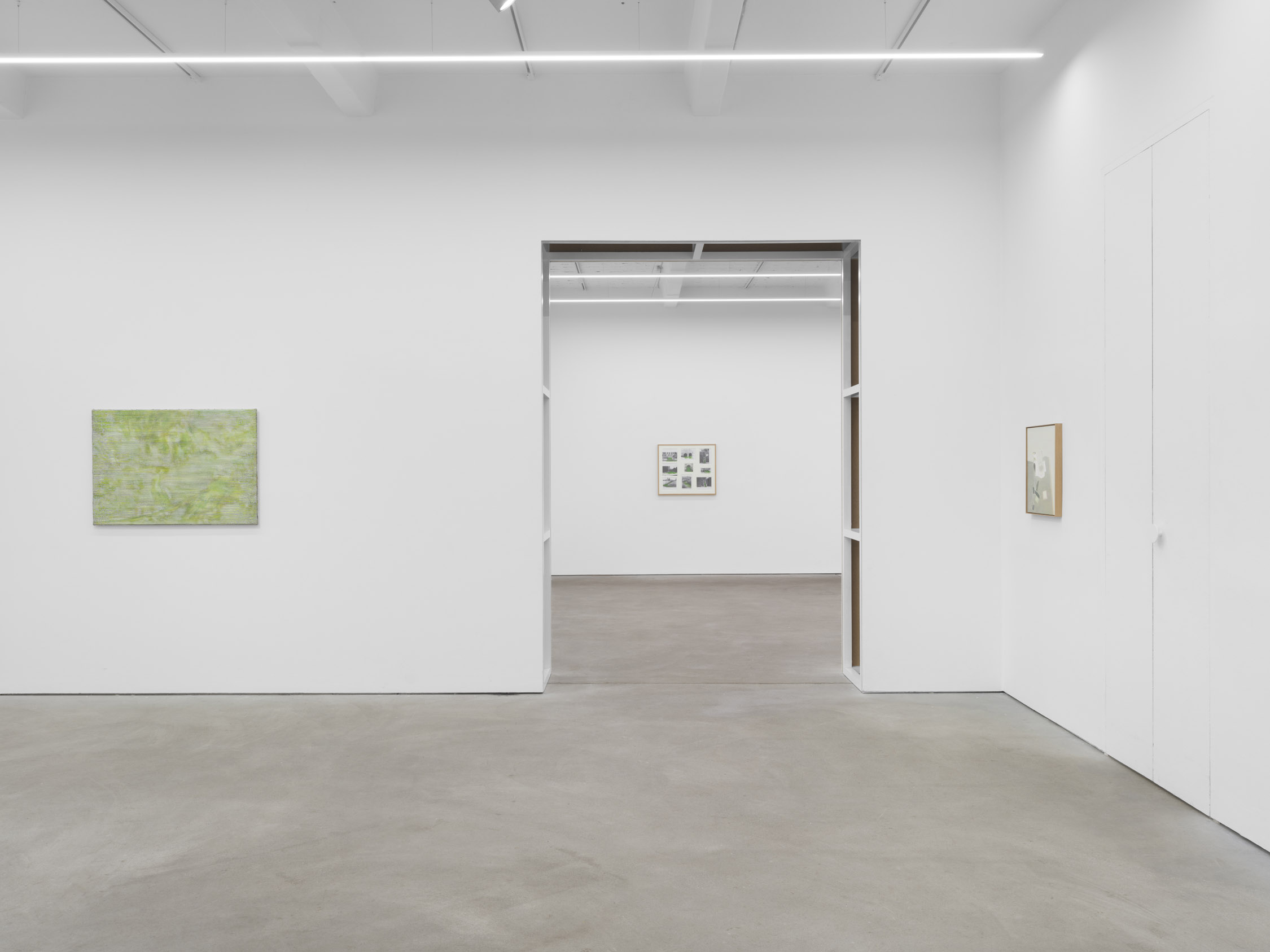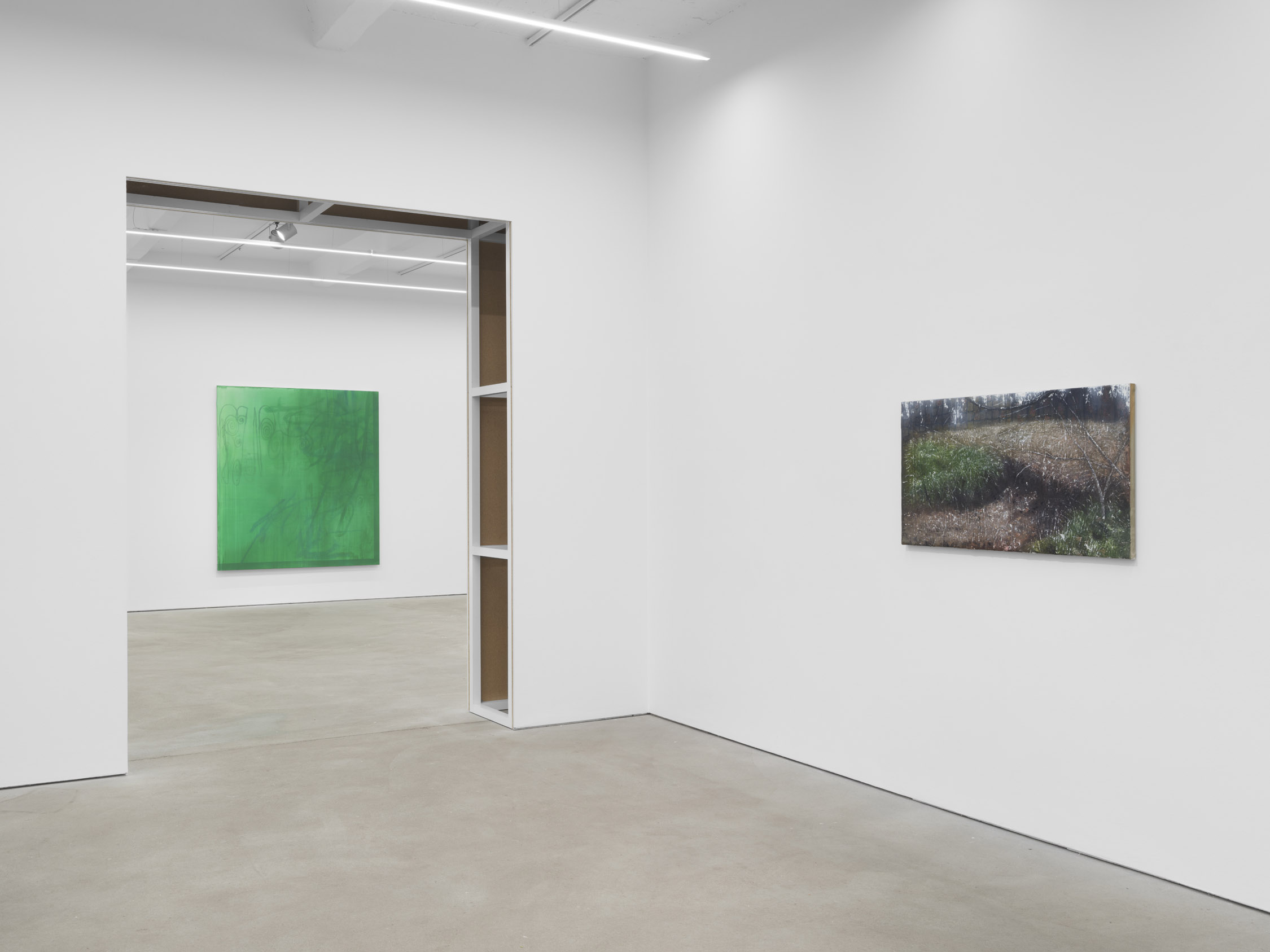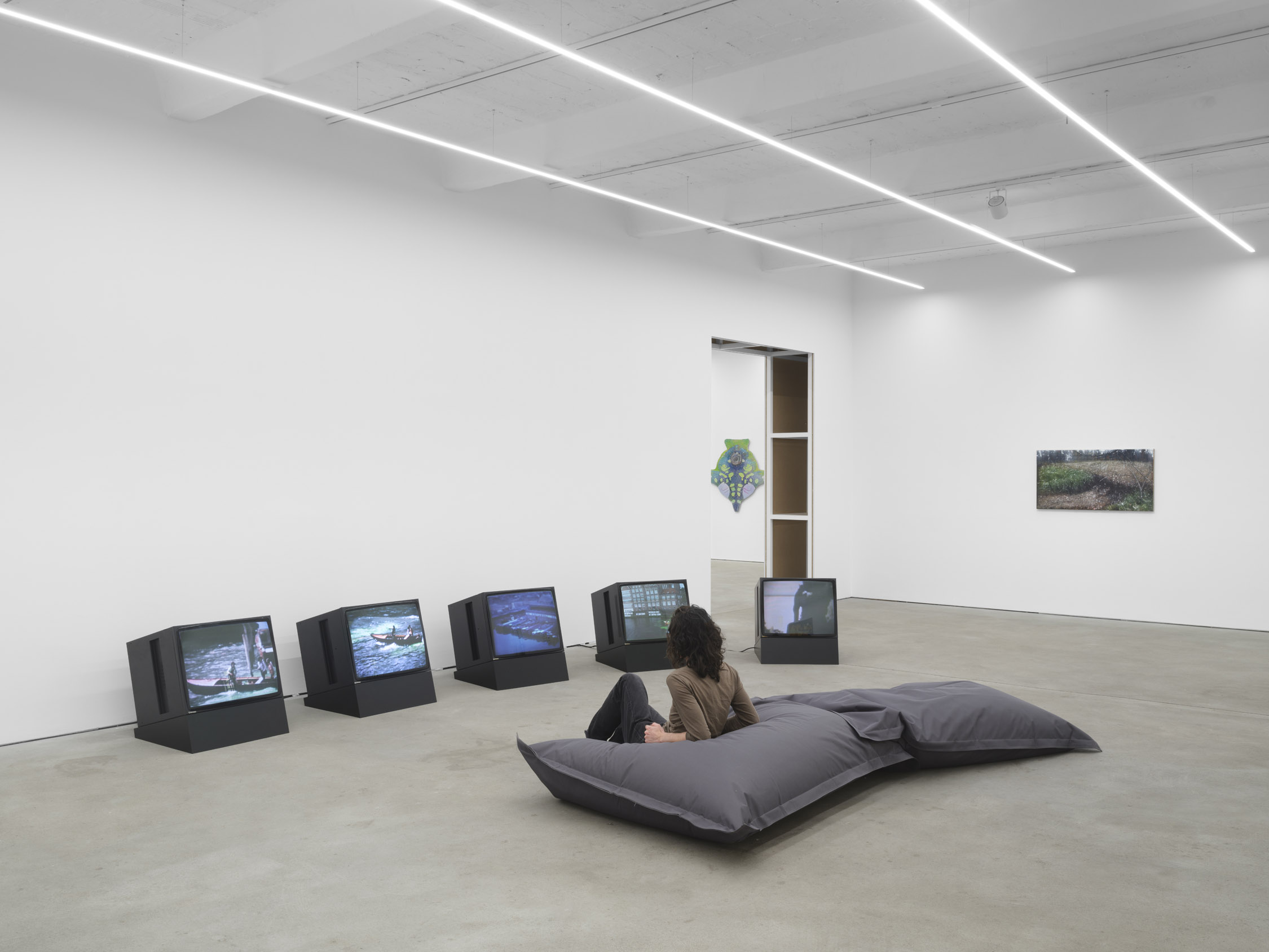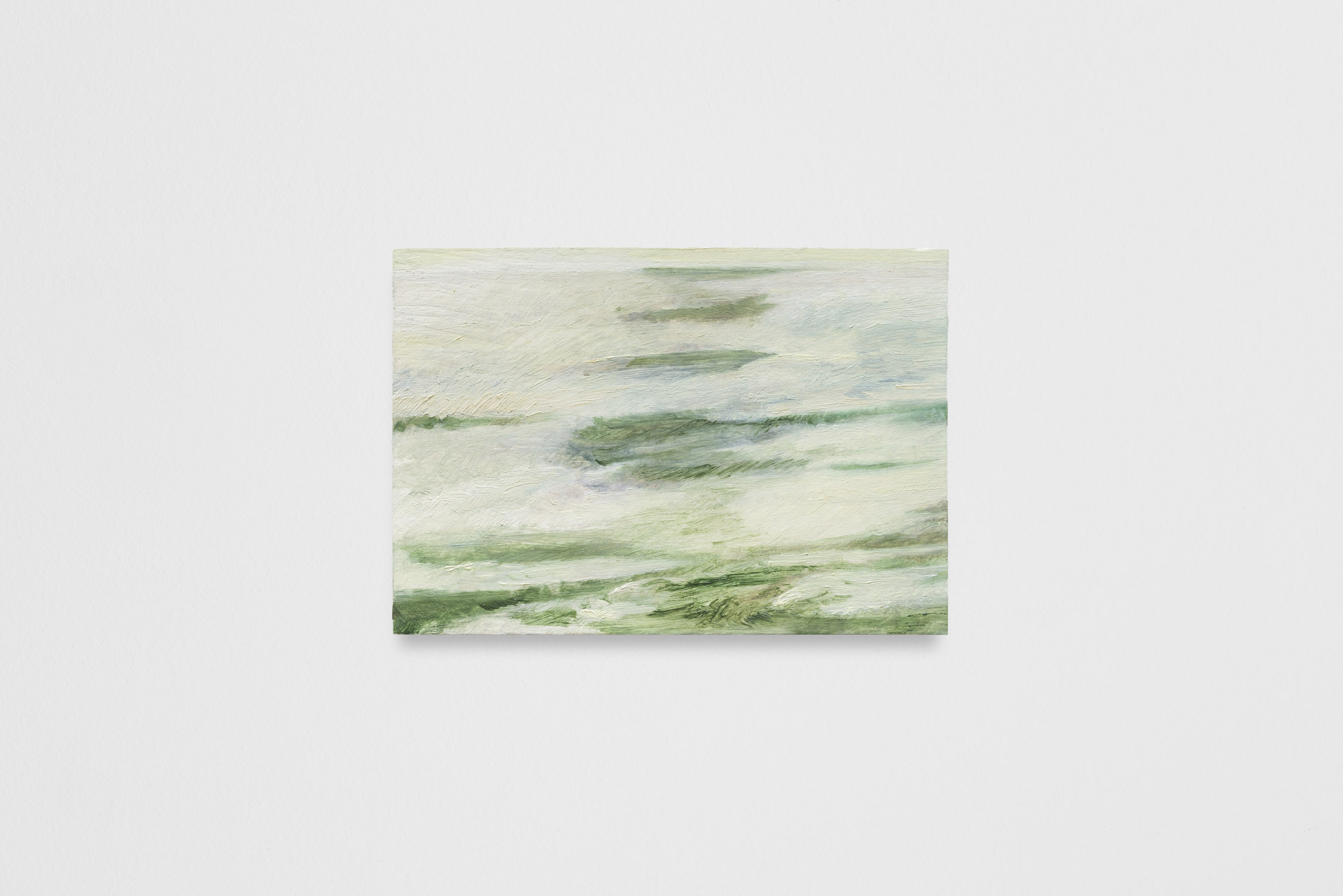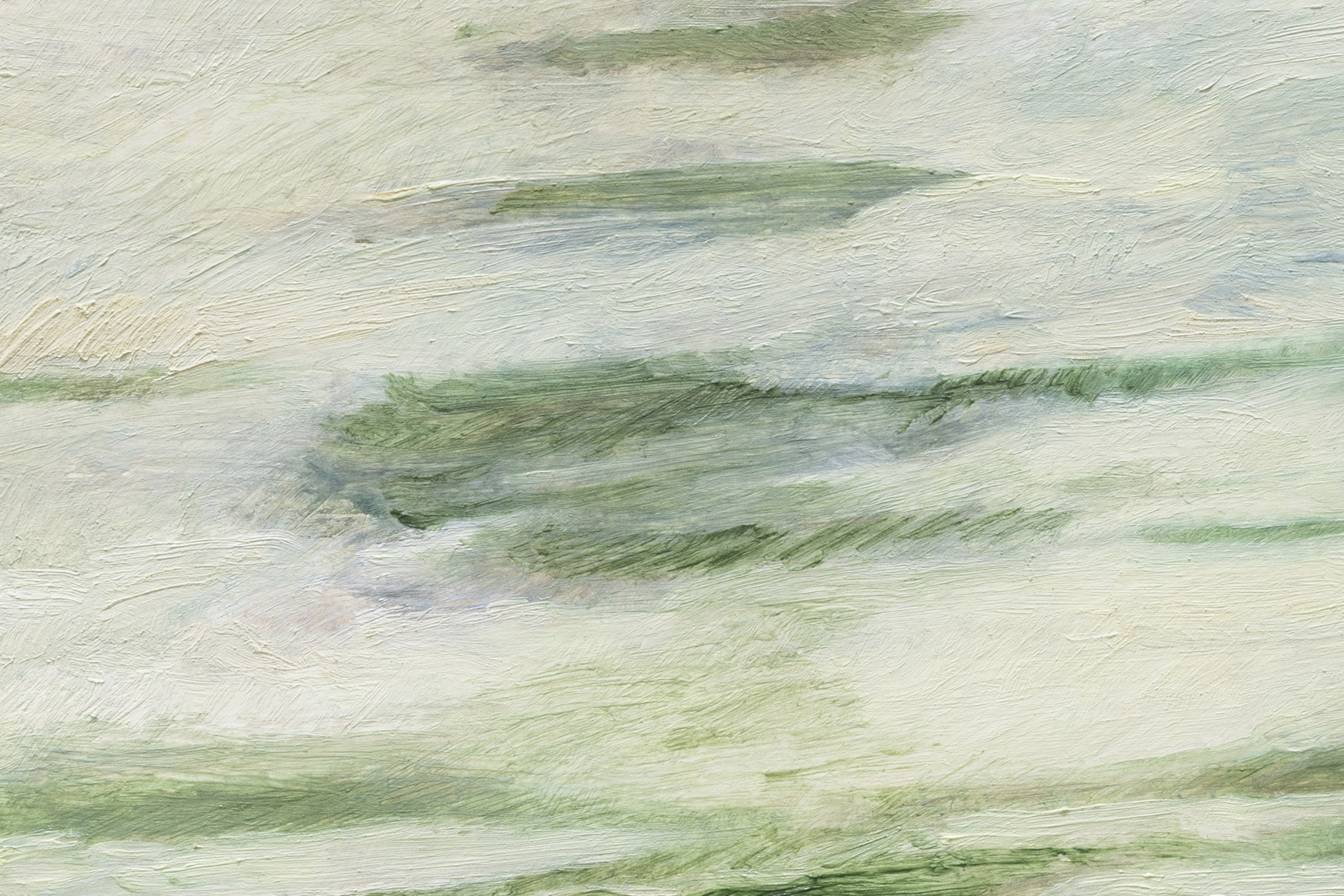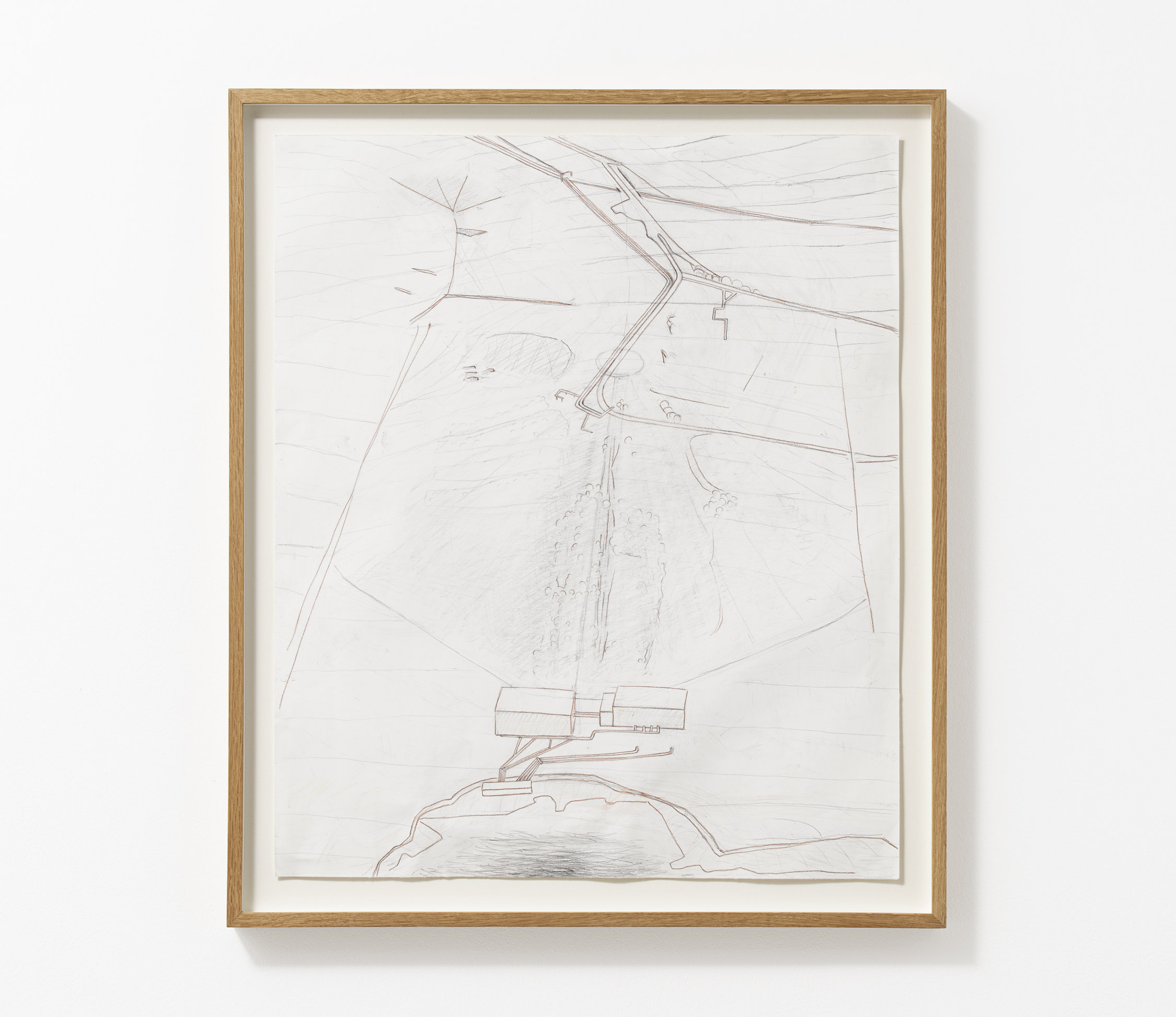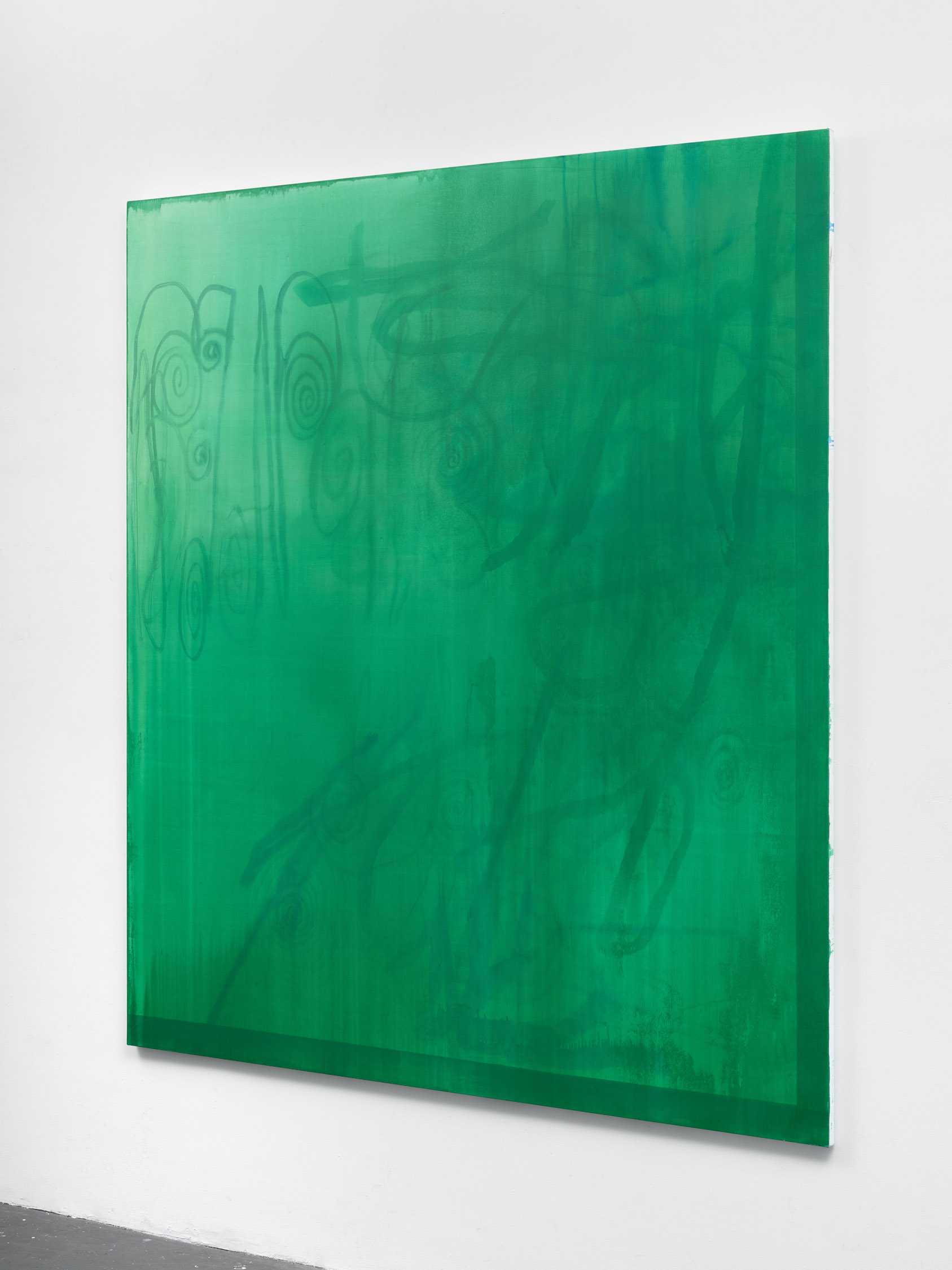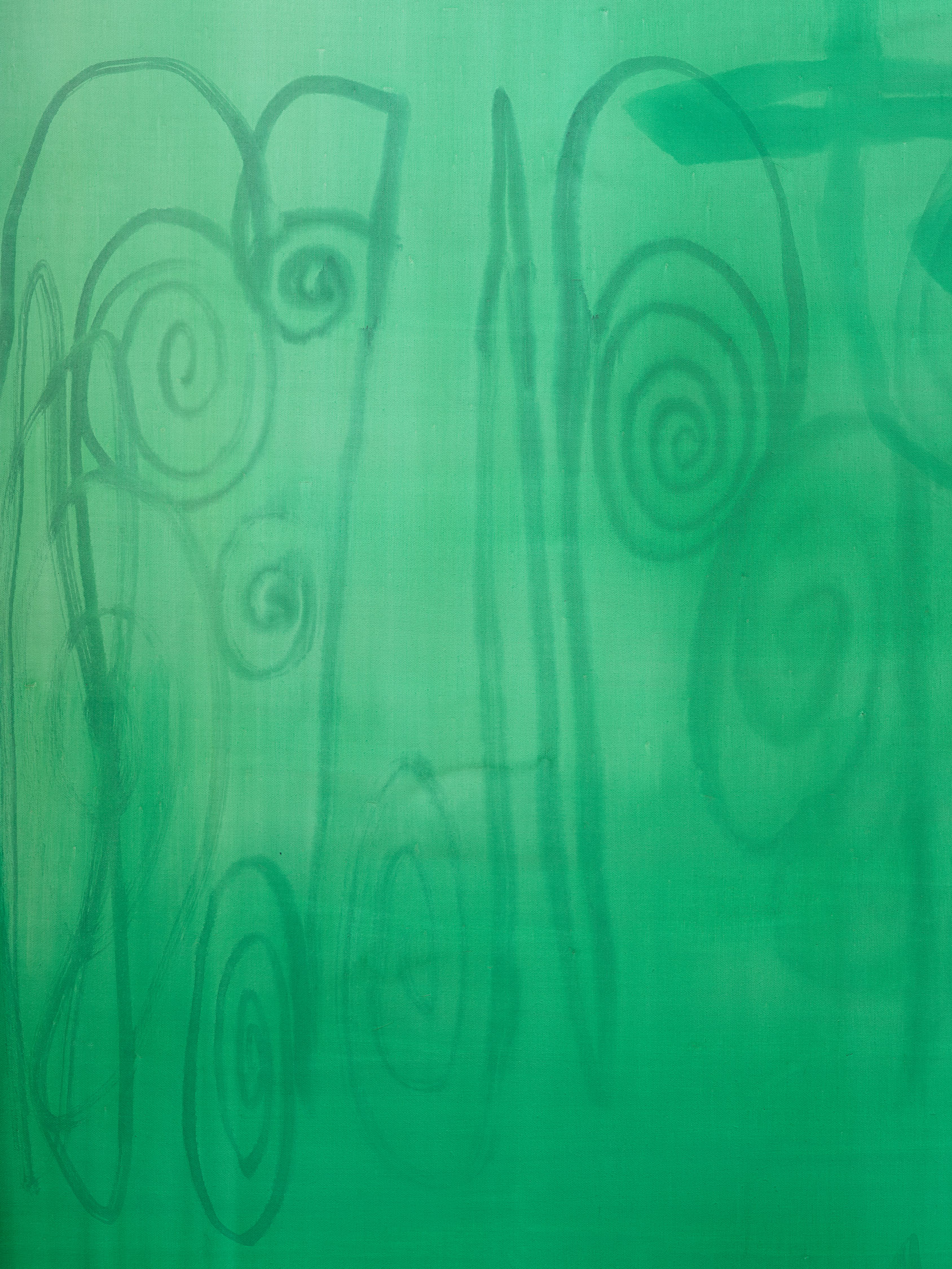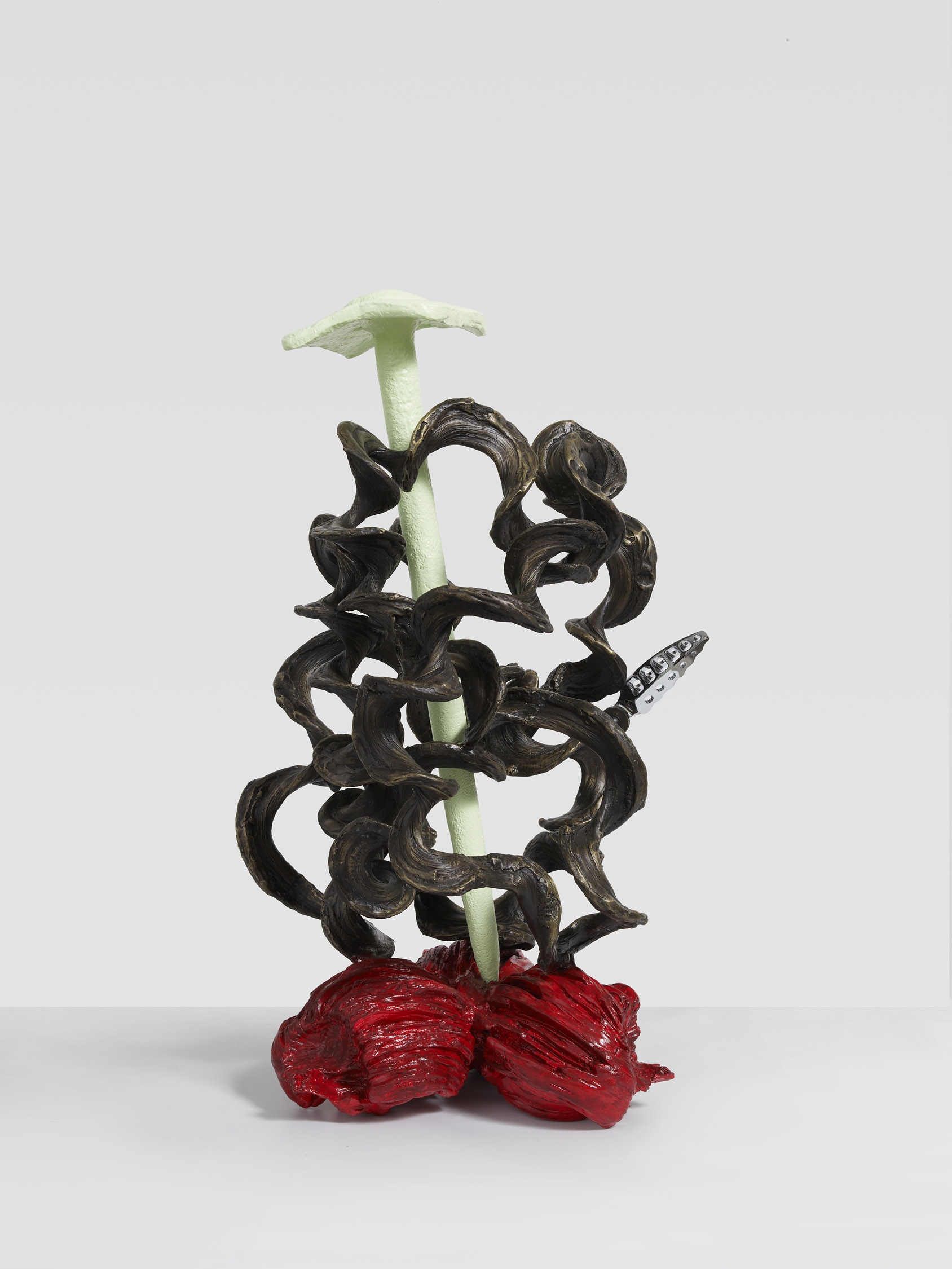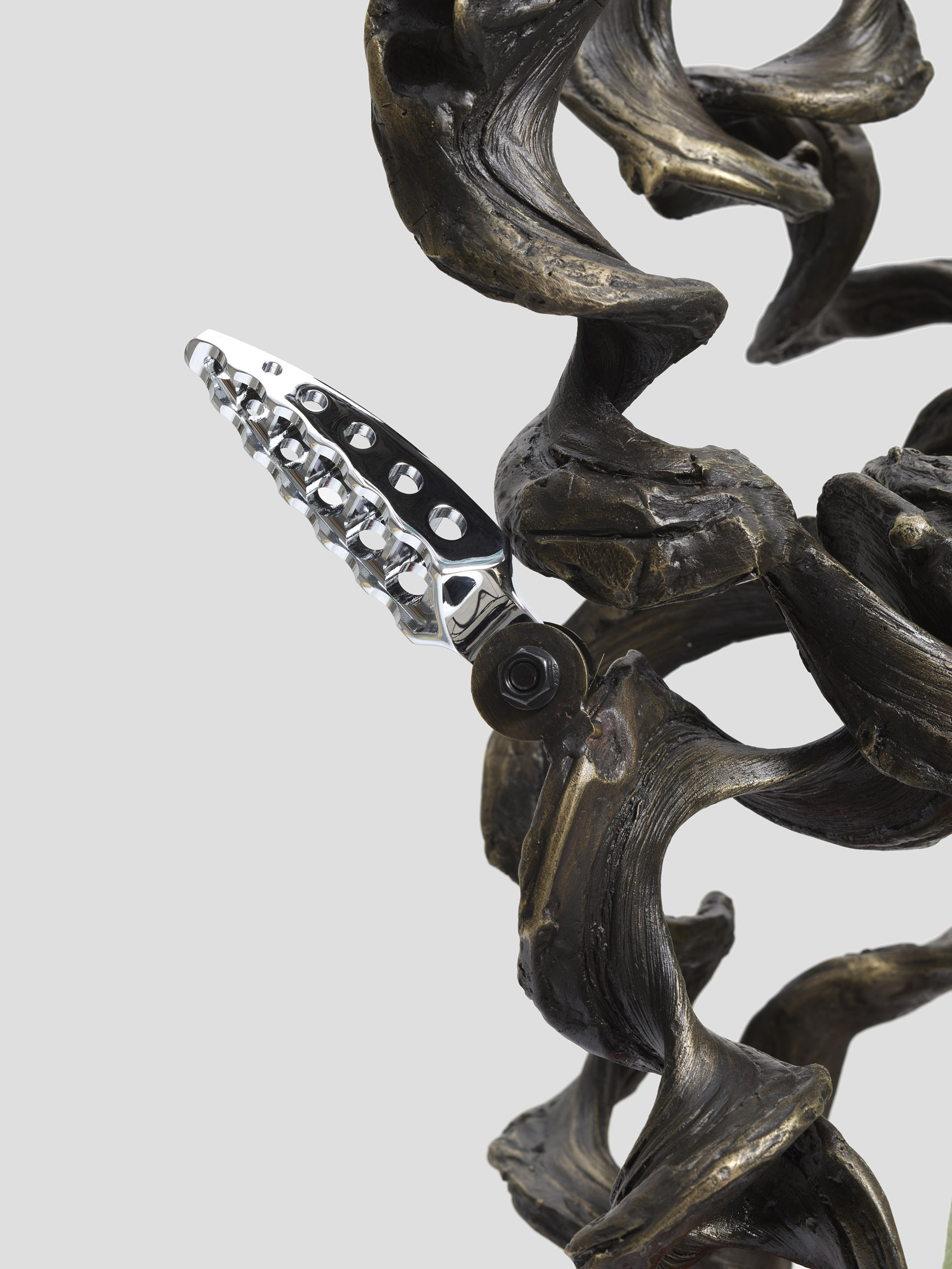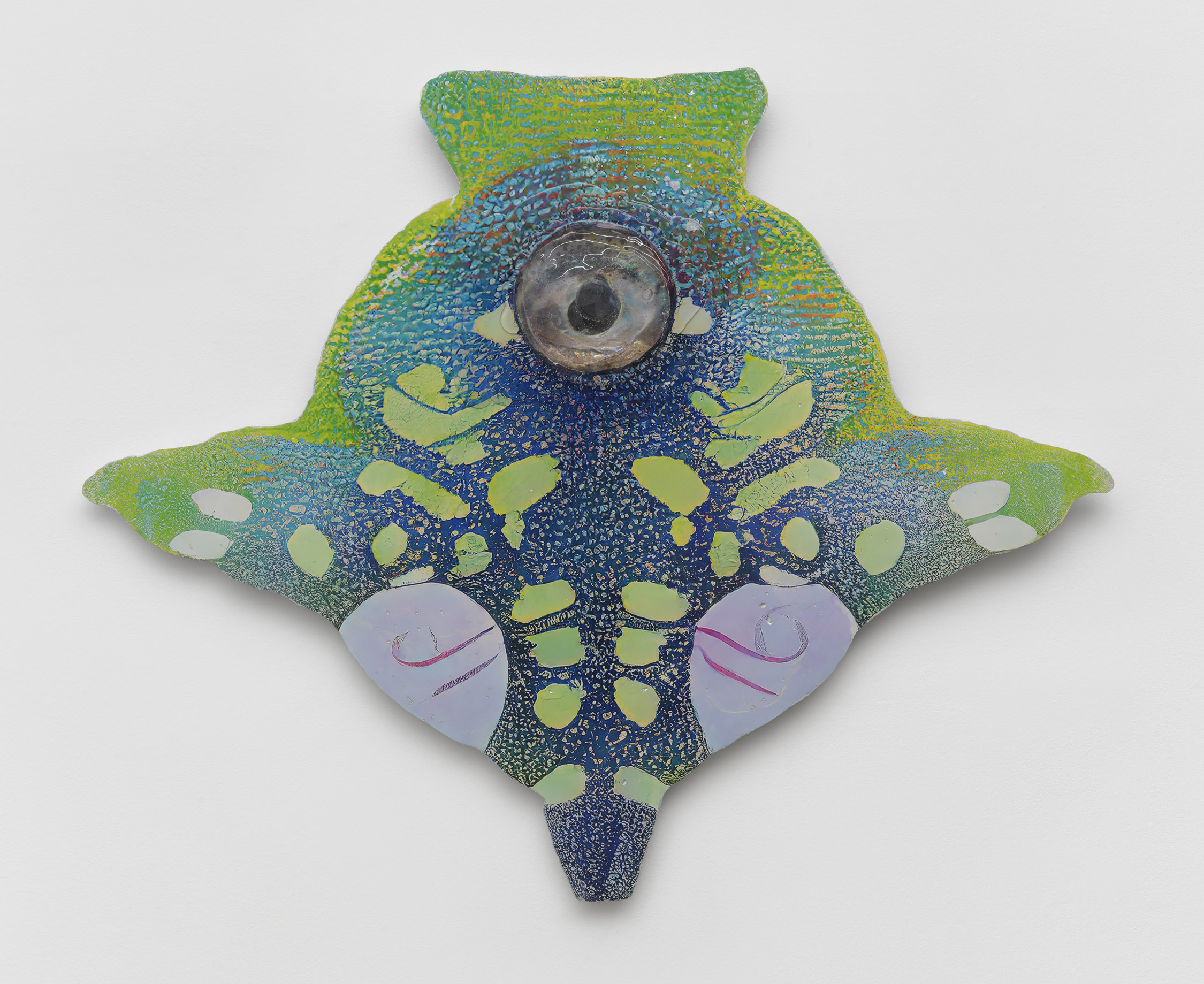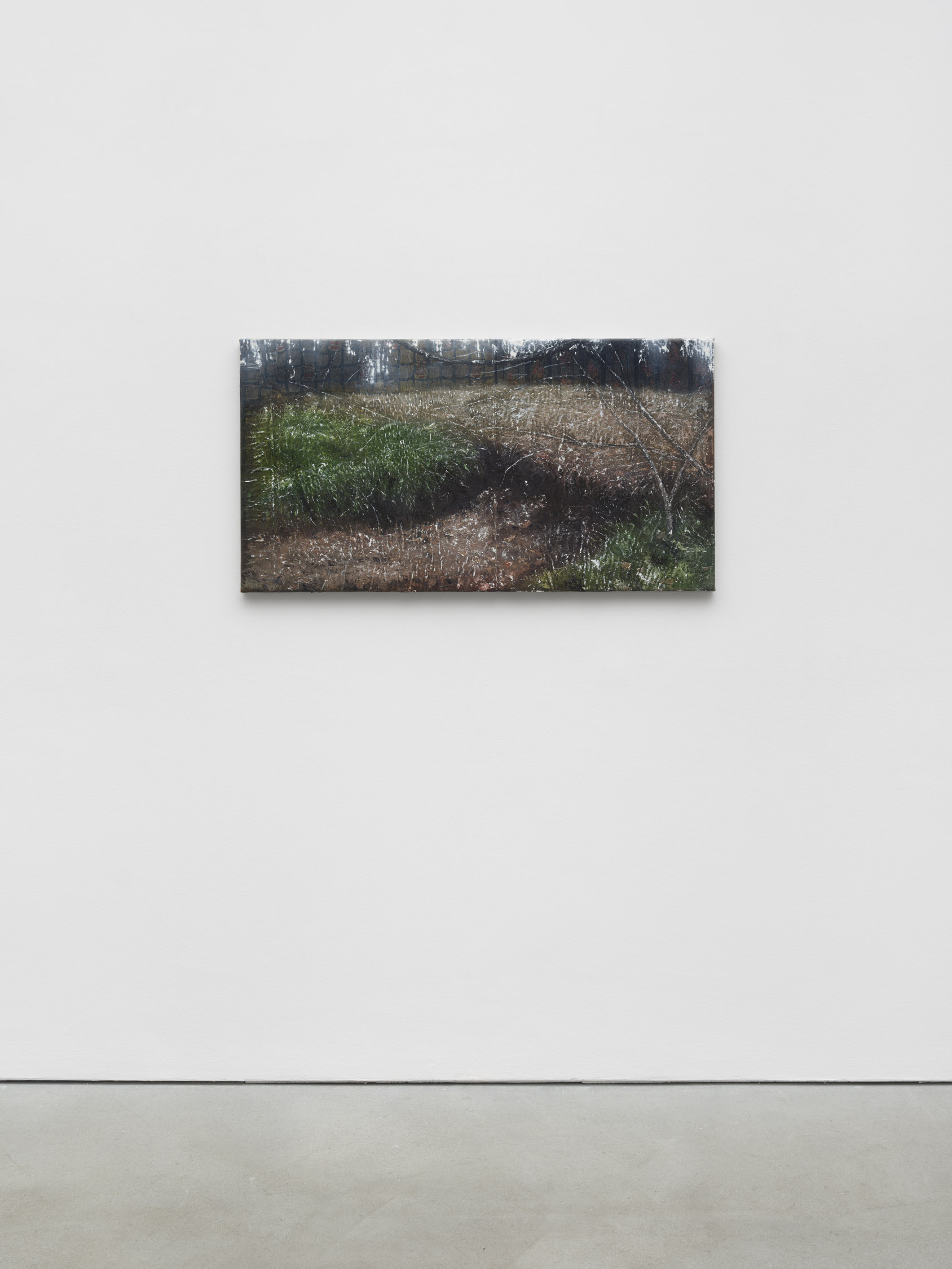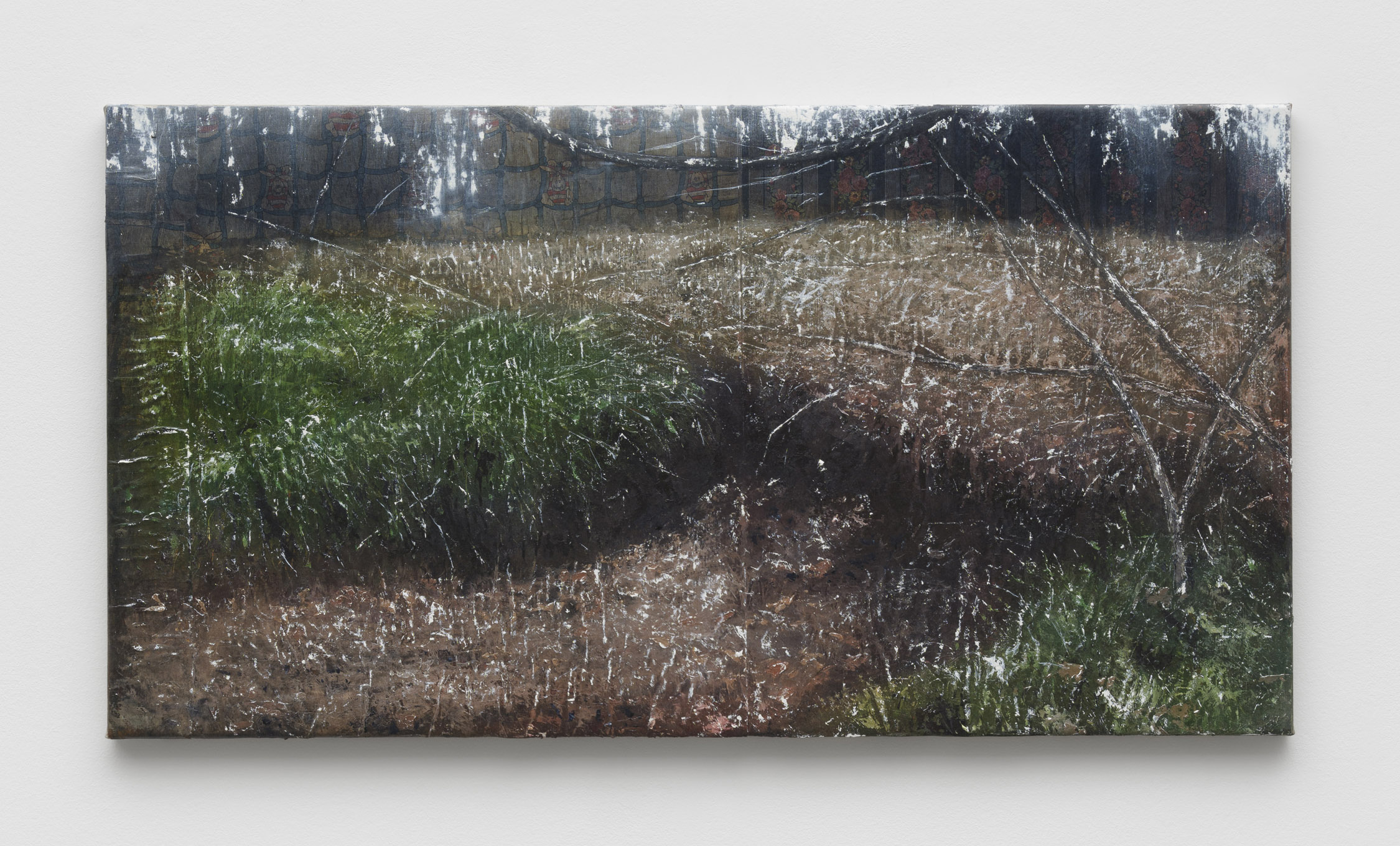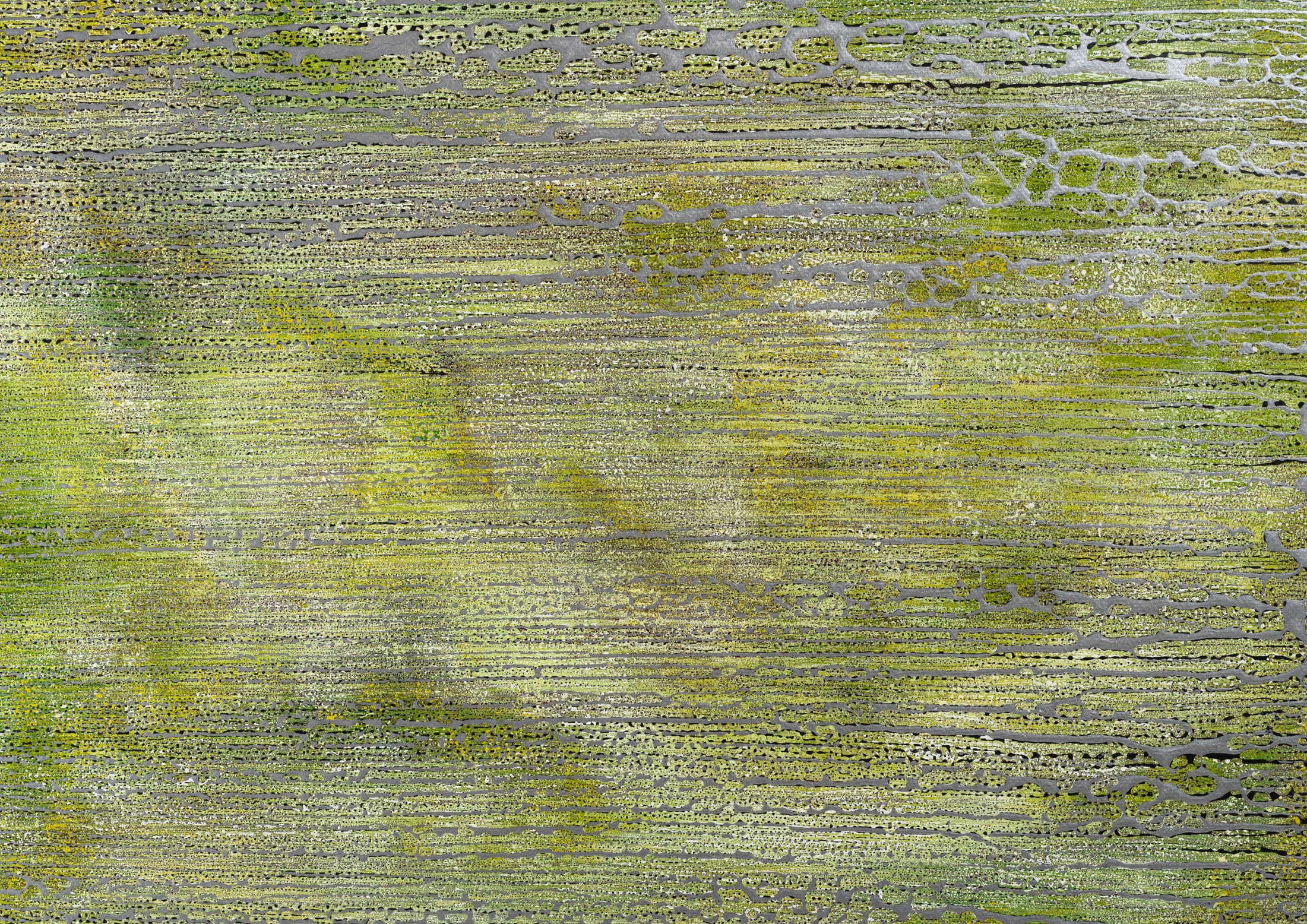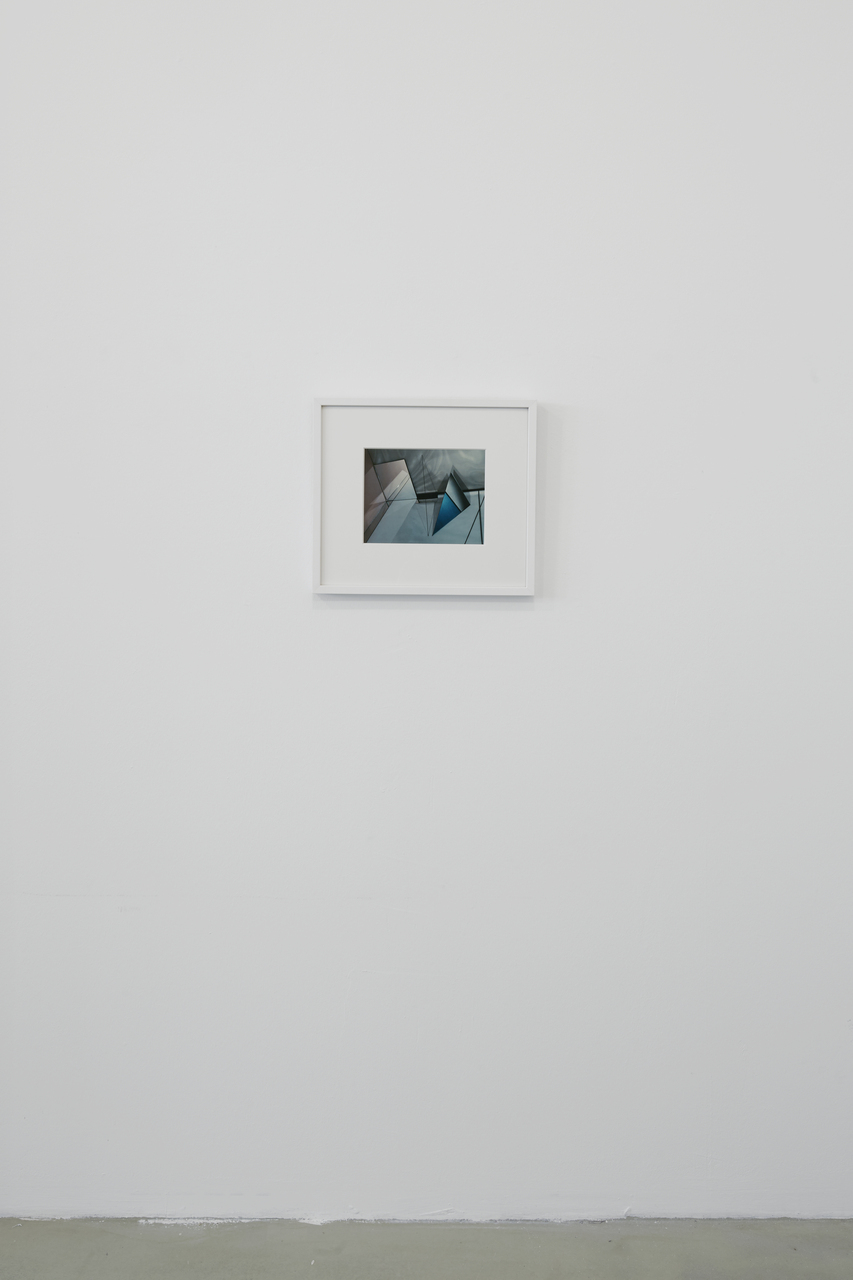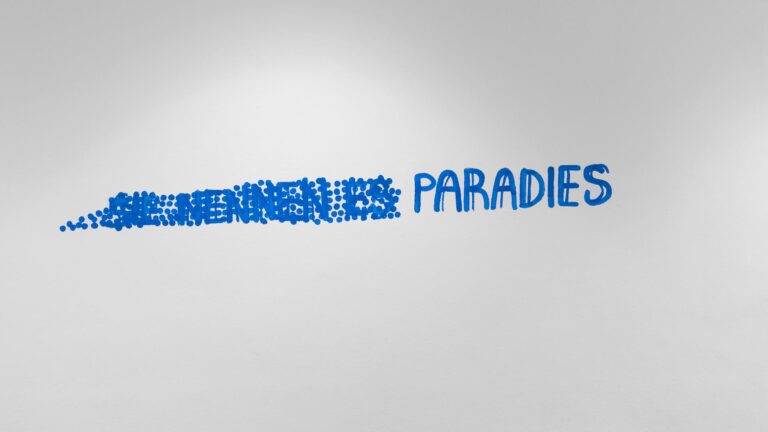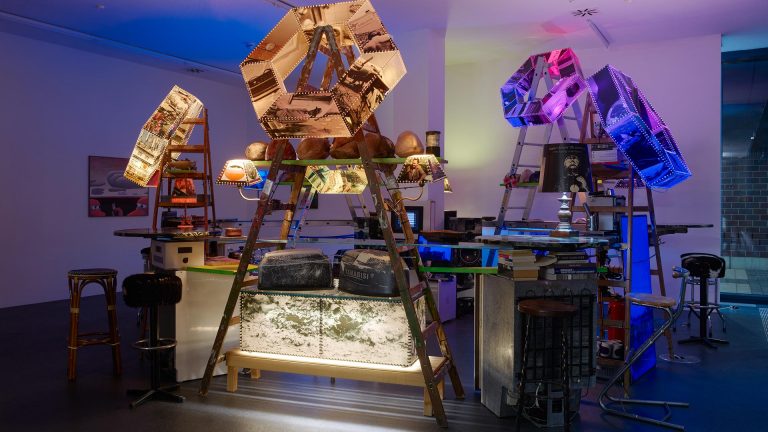Artists: Louis Eisner, Brett Ginsburg, Guan Xiao, Brook Hsu, Katja Novitskova, Carol Rhodes, Nicolás García Uriburu
Exhibition title: Fictional Syntheses
Venue: Kraupa-Tuskany Zeidler, Berlin, Germany
Date: July 6 – August 17, 2022
Photography: def image / all images copyright and courtesy of the artists and Kraupa-Tuskany Zeidler, Berlin
Fictional Syntheses features practices exploring non-canonical approaches to landscape. The exhibition builds around the Coloration series that NICOLÁS GARCÍA URIBURU carried out between 1968 in Venice and 2011 in Bremen. He dyed canals, rivers, fountains and lakes with fluorescein, an organic and ecologically harmless dye developed by NASA, dramatically altering the look of the urban landscape to raise awareness of environmental crises, and the connection between nature and civilization.
On June 19, 1968, Uriburu made a transgressive gesture by dyeing the waters of Venice’s Grand Canal green. This intervention coincided with the opening of the 34th Venice Biennale as well as the time of day in which the tides were at their peak. The depth, the currents, and the ebbing tide of the Grand Canal served as materials for this artwork. The coloration was an act of denunciation, and simultaneously a radical painterly gesture in which he exchanged the brushstroke and paint for an unconstrained application of color.
CAROL RHODES’ practice also privileges the urban environment as a subject and offers a perspective on the landscape which implies the climate conditions Uriburu protested. Rhodes’ work subverts the typical modulus of landscape painting, favoring portrait format and peripheral locations above idyllic depictions of nature. Her paintings and drawings capture highways, parking lots, energy plants, all products of human development, viewed from an aerial perspective. Her locations are fabricated, combining imagery from photos, geographic studies and memories– citing phenomenological and quantitative records of space as equally truthful references. The landscapes engage with a post-industrial, unromanticized vision of this genre, one that assumes the exploitative relationship of civilization towards nature and the value of it as a resource.
Taking the vantage point and aesthetic pragmatism of satellite imagery, Rhodes’ paintings suggest an accuracy which they are in fact lacking. Both in content and as amalgams of different locations, Her compositions distort the characteristics they borrow from photography, flattening and extending the plane of focus to the center of the image. Due to the tertiary colors and lack of cast shadow and contrast, her scenes are rendered in a moody, atmospheric cloud. The land and water in Inlet, 1997 are filtered through a green haze, capturing a quiet and motionless view of nature rarely experienced in reality.
Nodding to Rhodes, BRETT GINSBURG’s work, Thermal Consequence, 2024, references aerial imagery from Chilean lithium pools, typical to Ginsburg’s practice of depicting the unseen technical systems which facilitate contemporary civilization as we know it. Lithium has a number of applications, most pertinently as the energy source for Lithium-ion batteries. Thermal Consequence is a slippery translation of real space. Interested in the impacts of development around mineral brines for alternative fuel production, Thermal Consequence is an exploration of landscape painting, and a social and scientific inquisition into the imprint of energy mining.
Ginsburg produces paintings which are abstract by virtue of the obscurity of the subject matter. Rhodes does the inverse, creating fictional scenes which are pedestrian and familiar enough to appear factual. Her sparing application of paint paired with the smoothing effect of distance diminishes the subject, producing imagery which evokes a sense of social dislocation and alienation.
LOUIS EISNER’s Ditch, 2024 depicts a scene on the edge of a horse-racing track outside of Paris. Adverse to Rhodes’ distanced aerial painterly perspective, Eisner’s marginal approach to landscape positions the viewer at eye level amongst the landscape he depicts, almost within the weeds and thickets. Ditch is a gloomy rendering of an ambiguous space: not urbanized, yet marked and altered by its proximity to developed land. Eisner’s landscape is dotted with white marks, which appear at first glance as glowing dew, or perhaps spider webs. The heavy handedness of this textured layer of paint as well as the brilliance of the white against Eisner’s otherwise muted and dark color palette lends the banal subject a mystical quality. Eisner’s work, painted atop wallpaper mounted on canvas, is a synthesis, converging his scene with the vestigial prints of the wallpaper, cartoon characters and floral patterns populating the otherwise barren scene.
GUAN XIAO’s sculptural study of landscape is a commentary on the genre. Fire Rings, 2024, takes as its source imagery a scaled up photograph, collapsing the foreground and horizon line into a single picture plane. Guan Xiao formalizes environmental geometries, using scale and perspective to conjure evocations of natural light. While Rhodes’ use of scale, perspective and color induce a removed relationship to the landscape, Fire Rings dominates, capturing the sun through its reflection in water.
KATJA NOVITSKOVA’s practice investigates digital data systems and their possible utility in a scientific, artistic and philosophical sense, by creating spaces of possibilities in which nature and technology are resituated through the transformation of the organic into digital imagery. Earthware (Looking Glass Mola Mola), 2024 is the result of many layers of translation harkening back to the artist’s previous series of work, namely the Looking Glass algorithm’s free hallucination of documentation photos of her earlier sculptures. The resemblance to a sunfish in the artwork is therefore incidental. Novitskova’s body of work generates a feedback loop in which the source imagery feeds itself to produce new forms, ultimately producing a likeness to an existing animal, therefore positing machine learning as a deific entity.
BROOK HSU’s Pale Green, 2022 was originally conceived as part of a site specific installation at Sant’Andrea de Scaphis which reduced a panorama to a single continuous green horizon line. Pale Green, for Hsu, is a description of light and air. The work depicts a warped skull on a wooden panel, referencing early renaissance anamorphosis. When isolated from the installation and series, Pale Green functions solitarily as a non-literal landscape, grounded in the format, color palette, and materiality of the genre. The abstracted subject formally harkens a naturalistic likeness. Like Rhodes, Hsu treats the landscape as a psychological location as much as a physical one. Hsu substitutes the vastness of nature for the eternity of death.
The landscape and the forest appear in Hsu’s works through their materiality: the hard maple wood of Pale Green and the shellac ink, made from the resinous secretions of lac beetles, often used as a varnish for its transparent and protective properties. Hsu uses shellac ink with a liquid approach, letting it pool and soak. Green is the motif and means of Farewell, 2024, a signature and device in its own right as it functions in Uriburu’s colorations. Her technique deploys different shapes and means of painted lines – spiral, zigzag or serpentine – rethinking line as an archaic and inherent aesthetic force. Through these calligraphic gestures, Hsu builds and complicates writing, materializing verses that live beyond their textuality.
For Hsu, the landscape is a format, a source of materiality, a pool of references as well as the metaphorical framework which founds her work. Rhodes treats the landscape with the same sensitivity towards its expansive capacity. As said by Beatrice Hilke, the curator of Carol Rhodes’ recent exhibition at Haus am Waldsee, the landscape can be understood as a revelatory power, a tool by which to express psychological states:
“Her compositions are a testament to the suspension of dualistic hierarchical order and comprehend humans and nature as part of a larger ecosystem”.
“I consider myself a landscape painter, albeit an eccentric one. Landscapes hold records of Nature’s ambivalence. Harm is a human construct. Nature has no laws, it just is and does. And I think this quote from Tales from Earthsea answers the question about immortality: ‘What goes too long unchanged destroys itself. The forest is forever because it dies and dies and so lives.’” – Brook Hsu
